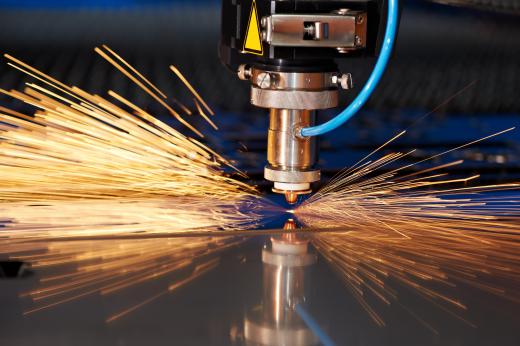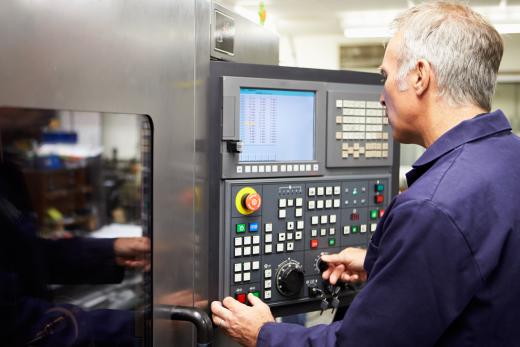Metalworking machinery includes a wide variety of equipment used to cut and shape metal. These machines offer an alternative to shaping these metals by hand, resulting in greater precision and higher production levels. They can be found in many metalworking shops, manufacturing and industrial facilities throughout the world, as well as in the homes of hobbyists. Metalworking machines come in many forms, including lathes, milling machines, and planers. This equipment also includes basic tools used to modify the surface or finish of metal, including grinders, polishing equipment, and embossing machines.
Lathes are one of the most widely used types of metalworking machinery. These devices rotate a metal object around a spindle. As it rotates, tools and cutting bits shape or cut the metal into the desired form. These machines can range from small desk-top units to large floor models. While some may be manually operated, most rely on computer programming using computer numerical control (CNC) software.

The milling machine can be thought of as a more advanced version of the lathe. This metalworking machinery holds an object in place as the worktable moves around it. Unlike the lathe, milling machines can modify metal across three dimensions, not just two. Micromilling machines can even be used to cut and shape items that are invisible to the naked eye. Like a lathe, milling equipment generally relies on CNC software for precise control and programming.

A metal planer can be used to cut or shave metal in a single linear direction. These machines hold the metal object stationary, then run a cutting blade across the surface to smooth or flatten the material. Planers can also be used to cut slots or other shapes into the face of a product.
Metalworking machinery can also include equipment used to bend and shape sheet metal. For example, a metal brake creates folds or bends in sheets of steel and other metals. Similar machines are used to stamp or emboss patterns into metal, or to roll it flat. These machines can be either manually operated or controlled using a CNC system depending on where they are used.

Extruding and casting equipment are other types of metalworking machinery. In casting, workers make a mold of an object and use it to shape molten metal. Extrusion involves forcing hot metal through a die. The shape of the die determines the shape and profile of the final product.
